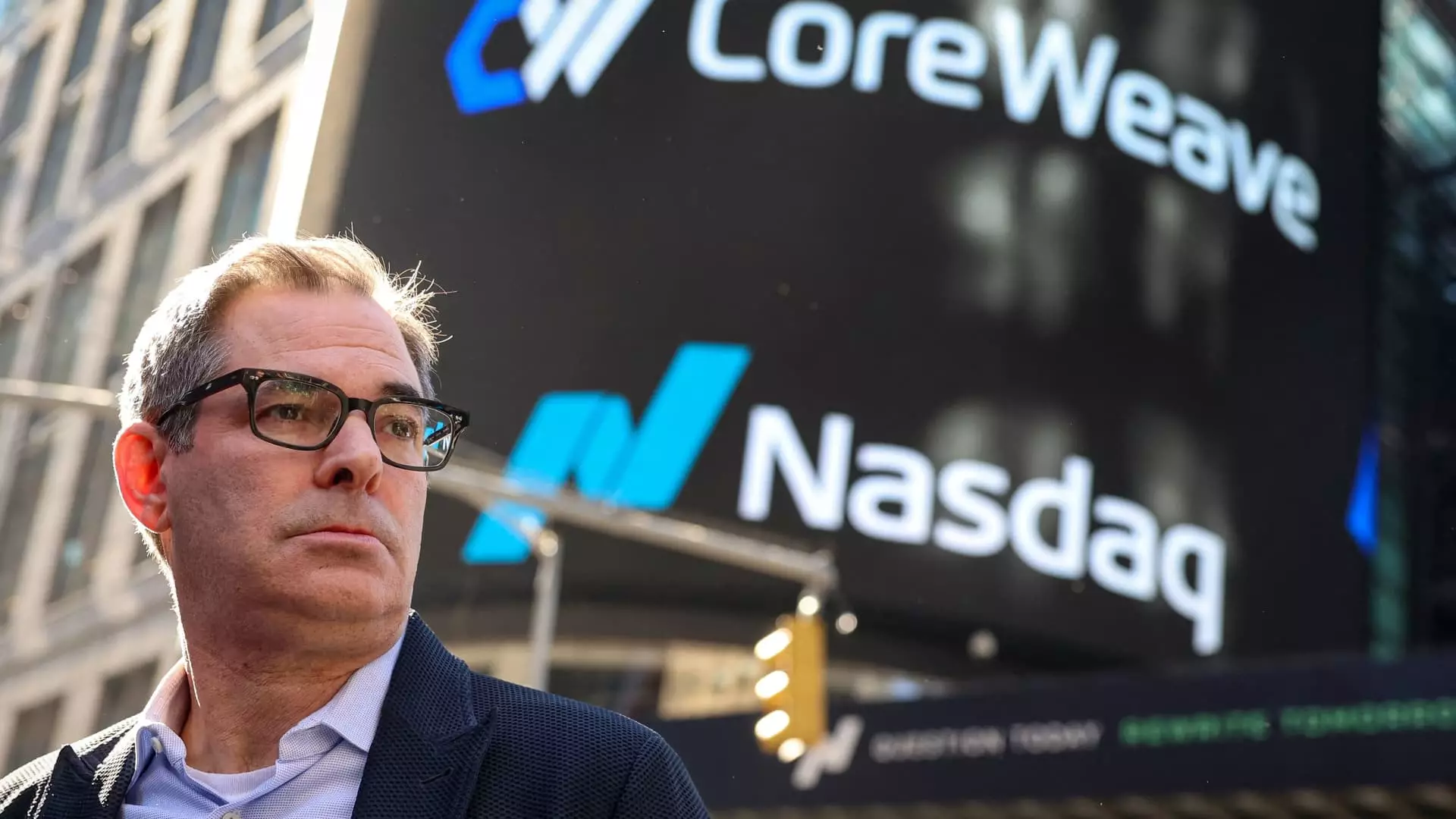CoreWeave, a rising star in the realm of artificial intelligence infrastructure, has recently seen its shares oscillate, reflecting the tumultuous landscape it inhabits. Markets tend to celebrate potential, and CoreWeave’s debut earnings report post-IPO illustrated a company eager to capture the burgeoning demand for AI capabilities. With revenue figures that suggested a staggering 420% growth and a forecast eyeing revenue between $4.9 billion and $5.1 billion, it’s hard not to feel exhilarated about what this New Jersey-based firm might accomplish in a world increasingly reliant on AI technology. However, the euphoria has been dampened by nagging questions regarding the sustainability of this growth and the daunting debt incurred by the company.
The Conundrum of Capital Expenditures
At the heart of CoreWeave’s aggressive growth strategy lies an ambitious capital expenditure (capex) projection ranging between $20 billion to $23 billion for the year, a staggering figure compared to analyst estimates. CEO Michael Intrator emphasizes that this inflated capex is a direct response to “demand signals” from entrenched clients eager for swift infrastructure support. Yet, one cannot overlook the hollowness of such proclamations in the face of relentless optimism. This narrative of unprecedented demand, while appealing, should prompt investors to interrogate the longer-term implications of such vast financial commitments.
By ramping up spending without a transparent outline of how they will mitigate their mounting debts, CoreWeave risks falling into the financial quagmire that has ensnared many promising tech firms before. Debt isn’t inherently harmful—it’s a necessary tool for growth—but it assumes that the demand being catered to is not merely a fleeting surge. The industry is rife with short-lived booms, and CoreWeave’s reliance on substantial advanced patronage could leave it vulnerable the moment market dynamics shift.
Investor Skepticism and Analyst Downgrades
Investor reactions have been mixed following the earnings report. While some remain buoyantly optimistic, others—especially analysts from firms such as DA Davidson—have begun to express skepticism. The downgrade to an ‘underperform’ rating underscores a genuine concern about CoreWeave’s projection of future profitability against a backdrop of high-interest liabilities. The dichotomy between today’s growth metrics and tomorrow’s financial viability raises red flags. Analysts like Gil Luria have voiced apprehension that CoreWeave may be pursuing a strategy that is more akin to “throwing money against the wall to see what sticks,” rather than cultivating a sustainable business model.
The crux of Luria’s argument revolves around CoreWeave’s soaring interest rates juxtaposed against asset returns that don’t inspire confidence. If the company’s growth is primarily driven by short-term demand, the risks associated with its heightened capital spend could be an indication of a broader financial strategy that lacks soundness. Investors should ideally sidestep the pitfalls of uncritical enthusiasm that can cloud judgment, instead honing in on a holistic view of sustainability.
The AI Race: More Than Just Numbers
Despite the clouds of concern, CoreWeave’s ambition mirrors a larger trend enveloping the tech landscape: an urgent race for AI supremacy. The company has already scored deals with tech powerhouses like OpenAI and Microsoft, solidifying its reputation as a contender in the hyperscaler arena. However, relying on major contracts for survival can lead to an unhealthy dependency that may hurt CoreWeave if it cannot diversify its client base. Growth is only as solid as the foundation it rests upon, and constructing a fortress on the sands of major contracts may not be the most prudent approach.
Furthermore, the narrative that CoreWeave is riding a revolutionary wave in AI must be scrutinized. Not only is the sector hotly competitive, but innovations are tied firmly to market demands that can pivot without warning. The temporary spike in AI interest spurred by recent technological advancements may yet falter, leaving companies like CoreWeave grappling with inflated visions of grandeur that gather dust in the wake of market realities.
The Future: A Technological Prominence or an Economic Illusion?
CoreWeave stands at a crossroads: either as an emblem of technological progress or as a cautionary tale woven deeply into the fabric of modern capitalism. The juxtaposition of its incredible revenue growth against sizeable losses and debt requires a careful eye and critical perspective. One can only hope that the ensuing rush for AI dominance does not lead to yet another chapter in the financially ignominious saga of tech companies that failed to balance ambition with practical solvency. The ongoing discourse around CoreWeave serves as a poignant reminder that in the exhilarating world of technology, the line between meteoric rise and devastating fall can sometimes be perilously thin.

